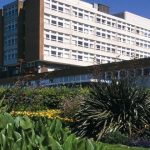A better understanding of the intricate processes driving age-related dysfunctions can lead to new intervention approaches, even if they don’t address root causes. In a recent study, researchers shed light on the specific age-related changes in macrophage behavior, which contribute to cellular senescence in stem cell and progenitor cell populations crucial for bone repair. This increased burden of cellular senescence hampers regeneration after bone injury.
This is just one example highlighting the complex relationship between the immune system and tissue cells in the context of regeneration. Macrophages and transient senescent cells play key roles in tissue maintenance and regeneration, but they undergo significant changes with age, leading to greater inflammatory behavior and an excess of lingering senescent cells. Without a precise understanding of how these changes negatively impact other cell populations, selective interventions are challenging. Currently, senolytic therapies are used to clear the problematic senescent cells, lacking a full understanding of their origins.
The age-related secretion of grancalcin by macrophages induces senescence in skeletal stem/progenitor cells during fracture healing, contributing to the impaired regenerative capacity associated with aging. This discovery provides a potential target for therapies aimed at preventing or delaying age-related bone loss.
Osteoporosis and age-related skeletal deterioration are linked to the accumulation of senescent cells, which have a detrimental effect on bone turnover and fracture healing. Previous studies have shown that removing senescent cells in aged mice can improve fracture repair, highlighting the importance of addressing this issue in elderly individuals.
The research revealed that macrophages in calluses secrete prosenescent factors, including grancalcin (GCA), during aging, causing senescence in skeletal stem and progenitor cells and impairing fracture healing. Understanding the mechanisms behind this can lead to promising therapies for incomplete fracture healing in the elderly, such as GCA neutralization.





